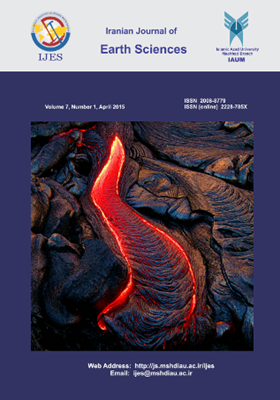Soil Liquefaction Hazard Zonation Map for Kordkuy County, Golsetan Province Using Model SWM
محورهای موضوعی : MineralogyMahtab Forootan 1 , Esmaeil Silakhori 2 , Ehsan Alvandi 3
1 - Department of Watershed Management, Gorgan University of Agricultural Sciences and Natural Resources, Gorgan, Iran.
2 - Department of Watershed and Desert Area Management , Gorgan University of Agricultural Sciences and Natural Resources,
Gorgan, Iran.
3 - Department of Watershed and Desert Area Management , Gorgan University of Agricultural Sciences and Natural Resources,
Gorgan, Iran.
کلید واژه: Earthquake, hazard zonation, Soil liquefaction, SWM model,
چکیده مقاله :
Liquefaction is one of the most determinant factors in the collapse of transportation infrastructures. This is especially true for roads and railroads located on saturated, fine-sand substrates under seismic conditions. The damage and human casualties resulting from liquefaction highlight the importance of understanding and mapping this phenomenon. Soil liquefaction occurs as a natural hazard in saturated, loose sand due to increased pore pressure and low shear strength. The purpose of this study was to prepare a soil liquefaction hazard zonation map for Kordkuy County, located in Golsetan Province, using data collection, basic digital mapping (soil deposits map, ground water depth and earthquake acceleration map), three parametric Stanford Watershed Models (SWM) and ArcGIS software . An empirical liquefaction model as a function of the three studied variables was used to model liquefaction in four hazard classes using ArcGIS software. According to the results, most areas fall into the nonhazardous and moderately hazardous risk classes. A portion of the Eastern County was classified as highly hazardous due mostly to its close proximity to an earthquake focal point.
Liquefaction is one of the most determinant factors in the collapse of transportation infrastructures. This is especially true for roads and railroads located on saturated, fine-sand substrates under seismic conditions. The damage and human casualties resulting from liquefaction highlight the importance of understanding and mapping this phenomenon. Soil liquefaction occurs as a natural hazard in saturated, loose sand due to increased pore pressure and low shear strength. The purpose of this study was to prepare a soil liquefaction hazard zonation map for Kordkuy County, located in Golsetan Province, using data collection, basic digital mapping (soil deposits map, ground water depth and earthquake acceleration map), three parametric Stanford Watershed Models (SWM) and ArcGIS software . An empirical liquefaction model as a function of the three studied variables was used to model liquefaction in four hazard classes using ArcGIS software. According to the results, most areas fall into the nonhazardous and moderately hazardous risk classes. A portion of the Eastern County was classified as highly hazardous due mostly to its close proximity to an earthquake focal point.


